If you were a kid in high school (or college) during the mid-late 1980s – and into fast cars – you probably have a place in your heart for the last full-frame, rear-drive/live axle, carbureted cast-iron V-8 muscle car GM ever made:
The ’83-’88 Monte Carlo SS.
It was conceived at a time when memories of the original muscle cars of the 1960s and ’70s still lingered and everyone was hoping maybe they’d make a comeback, somehow.
Ford was the first to take a stab at it with the ’82 Mustang GT. “The Boss is back,” read the ad copy. And it was kinda-sorta true. The car did have a reasonably rumbly 302 V8. But the econo-boxy body (and four-lug wheels) along with the two-barrel carb sitting on top of the trying-hard Ford small-block didn’t quite make it. GM’s Camaro/Firebird twins were ok, too. But they lacked the heavy-hitter presence of the old school stuff.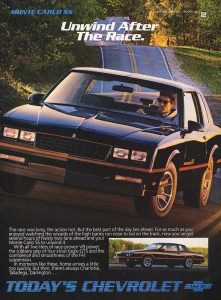
The SS Monte had presence in spades.
Its striking Winston Cup bodywork – shovel-nose front end with quad headlights, blacked-out grille, monochromatic paint job, beefy Eagle GT tires and rumpety-rump sewer pipe-sized dual exhaust hanging prominently behind the rear axle “pumpkin” – made it an instant hit in 1983, the first year of production.
Even better, the SS packed the goods to go with the stock car looks. Under that broad, flat hood sat the same basic “L69 HO” 305 cubic inch engine that became the optional engine in the Camaro Z-28 and Pontiac Trans-Am that year. The 5.0 V8 was old-time muscle – from its cast iron block and heads to its aluminum medium-riser intake manifold capped off with a Rochester Quadrajet 750 CFM 4-barrel carburetor.
To bump up the little 305’s output, Chevy fitted this engine with a higher-lift cam from the Corvette’s optional L82 350 V8, upped the compression to 9.5:1 and added a free-flow exhaust system with much-less-restrictive Corvette honeycomb (vs. pellet) catalytic converter and a lower-restriction air cleaner. 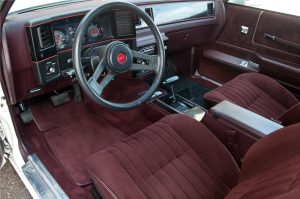
Though this exact same engine was rated at 190 hp in the Z-28, the Monte’s version was downrated slightly, to 180-hp. Probably to avoid annoying the Camaro faithful but also perhaps because the Monte’s version of the L69 305 got a single-snorkel air cleaner while those installed in the same-year got a dual snorkel.
Easily fixed.
By the standards of our time – almost 40 years down the road – 180 hp out of 5.0 liters doesn’t seem like very much. But in the early Reagan Years, it was more than just about anything else on the we road was packing.
Only the Corvette had bigger guns.
Performance? A stock Monte Carlo SS was good for mid-15 second quarter mile runs and 0-60 blasts under 8 seconds – hot runs for the era. But what made the car so much fun – so much like the big block muscle cars of the past – was the easy tire-frying burnouts (no traction control in those days), the tire-chirping 1-2 upshifts through the specially calibrated automatic transmission and the NASCAR rumble of a straight-up small block V8.
Flip the air cleaner lid to let the Q-Jet breathe deep, ax the catalytic converter – and you were ready to rumble.
More rumble was easy to install, too. The 305 was, after all, a small block Chevy V8 and all the traditional enhancements of the ’60s worked just as well in the ’80s. A hotter cam and some headers and you had ’60s performance in an ’80s muscle car, with much more comfortable seats and – if you wanted – T-tops.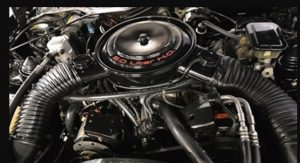
Which let you feel the breeze and hear the sounds.
First year sales were decent – but limited by available production capacity. Only 4,714 examples made it through the pipeline at a base MSRP of $10,474 (which was just slightly more expensive than the ’83 Camaro Z-28’s base price of $10,336).
1984 was much better – with sales increasing nearly six-fold to 24,050. This trend continued into 1985, with sales climbing steadily to a production capacity limited 35,484. Chevy could have sold even more Montes if the two plants where they were built in Arlington, Texas and Pontiac, Michigan had been able to bolt more of them together – but overall, the car’s performance on the lot was every bit as solid as its performance on the street.
In ’86, Chevy came out with a limited-edition version of the SS called the Aerocoupe – designed with NASCAR competition in mind, just like in the good old days of the Plymouth Superbird and Charger Daytona.
The Aerocoupe was defined by its unique raised rear glass, which followed the roofline back to the tail to cut aerodynamic drag at high speeds. According to published figures, the swept-back “aero” rear glass reduced the car’s drag coefficient relative to the standard notchback SS by nearly 3 percent – a big deal on the high-speed ovals where race versions of the Monte were running. These cars also had a unique ducktail spoiler which provided additional downforce on the car’s rear end – and added to the heavy-breathing stock car ambiance.
’86 was also the first year for standard gas-charged Delco Bilstein shocks and new argent/aluminum 15×7 wheels very similar to the ones first used on the ’80-81 Camaro Z-28.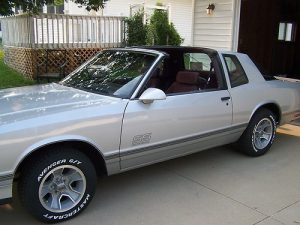
Of the 161,067 SS Monte Carlos produced during the five year run between 1983 and 1988, Aerocoupes are the most rare – 1986 models especially. Just 200 were produced – with another 6,052 built the following year. All were white – with identical options – which would have included the new-for-’86 15×7 aluminum rims with Goodyear Eagle GT tires, F41 sport suspension with high-effort steering and special “SS” decals and stripes.
Base price for the ’87 Aerocoupe was $14,838 vs. $13,463 for the standard notchback SS.
By this time, unfortunately, sales had begun to slide – down to 16,204. 1988 would be the final year for the Monte Carlo SS – and, sadly, for a rear-drive, V-8 Monte Carlo. Chevy decided the future lay in smaller, front-drive models like the soon-to-be-released Lumina.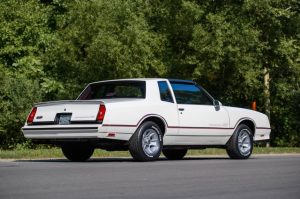
The Monte Carlo nameplate would be revived a few years later – and V8 power would return in 2006 (though in a front-drive configuration and with modern engine controls). But the classic muscle car layout of ’83-’88 was history – too crude for modern tastes; too politically incorrect to pass muster with Uncle
Every now and then, you’ll hear a memory. The sound of an old SS under full steam – Q-jet secondaries opening up, Eagle GT’s skittering on the pavement – a happy reminder of simpler times, of cheap thrills, of an America that was and maybe, one day, will be again.
They may build ’em faster – but they’ll never build ’em sweeter.
. . .
Got a question about cars, Libertarian politics – or anything else? Click on the “ask Eric” link and send ’em in!
If you like what you’ve found here please consider supporting EPautos.
We depend on you to keep the wheels turning!
Our donate button is here.
If you prefer not to use PayPal, our mailing address is:
EPautos
721 Hummingbird Lane SE
Copper Hill, VA 24079
PS: Get an EPautos magnet or sticker or coaster in return for a $20 or more one-time donation or a $10 or more monthly recurring donation. (Please be sure to tell us you want a magnet or sticker or coaster – and also, provide an address, so we know where to mail the thing!)
If you’d like an ear tag – custom made! – just ask and it will be delivered.
My latest eBook is also available for your favorite price – free! Click here. If that fails, email me at EPeters952@yahoo.com and I will send you a copy directly!










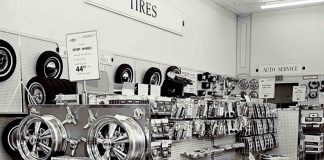
Curious does any current car still have t-tops? Basically the same idea as a targa top. They were fun. If not I wonder when the last one was.
Hi Mark,
I think the previous generation GM F cars (Camaro and Firebird) were the last to offer them. I suspect the reason no one does today is because of roof crush standards as well as issues with squeaks and leaks.
I get its retro cool but handles like a boat and the power just isnt there along with the auto transmission. From that era mustangs and grand nationals maybe are better choices. Even Camaros from that time had just horrible build quality. it felt like everything was stapled together.
Eric,
The Monte Carlo SS was an absolute out of the park home run back in the 80’s. Correct me if I’m wrong, but weren’t the 83 models equipped with the 350TH tranny and 3.42:1 gears? I think Chevy didn’t have the OD auto ready for the 83 unveiling…..Imagine that. I also believe the 83 could only be had with a column shift. Regardless, I have an old Motor trend which did an comparison test of the SS, Buick GN, and the Olds 442 of the same year. The GN equipped with the 3.8 Turbo,was only quicker to 60 by a mere one hundredth or 2. The SS was the hot rod of the 2, and ended up getting the nod…..nice article.
Hi Randy,
That could be –
I know this was a period of overlap – some of the early third gen. Camaros and Firebirds (’82s and ’83s) had three-speed automatics. The switchover seemed to be 1984. Somewhere in my mess I have the reference book that would tell me for sure. I will look around and if I find it, I will post it!
I do remember those cars would bark the tires on the 1-2 upshift… and, much as I like and respect the GN, the 305 small block would have been (still is) much easier and cheaper to hop up. A simple cam swap, headers and power tune could probably get 300 honest RW hp out of the otherwise stock 305. Doable in a weekend for (at the time) around $500.
I miss cars like this….
only the ’86 Aerocoupes were white the ’87’s you had your choice of 4 colors white, black ,silver,or maroon
if you have never owned a monte don’t knock ’em until you have had one .just purchased my second one an ’87 Aerocoupe.
I wasn’t knocking them – I really like them, in fact! Great looking cars with good performance for their time – and lots of potential for more.
ok, i had an ’85 monte carlo ss for 20 years and never had any major problems with it, just sold it in august to buy a ’87 monte carlo ss aerocoupe with 45,000 miles on it.
I’d love to have one of those!
No one makes a car like it anymore: Mid-sized coupe with real back seats and a full-sized car’s trunk. The closest thing is a new Challenger. It is a big car. It is also a preposterously expensive car. Base price for an R/T is $30k. That’s before all the taxes they tack on – plus the Clover-coverage (insurance). Easily a $40k “investment” by the time all is said and done.
I bet you could buy a very nice condition mid-’80s SS Monte for $15,000 or less.
was not referring to you eric but some of those replies were a little neg.about the monte carlo.the ’87 i just purchased is white/maroon interior had 45,000 miles on it paid $10,000 for it,sold the ’85 to a local couple that wanted it for $10,000 think this deal worked out good.
The GM G-body cars are destined to be the hot-item hot rods and customs,in,the near future, due to their independent fram design and rear-wheel drive, not to mention their lighter weight as compared to earlier american RWD cars. One look at the number of aftermarket companies tooling up to supply repro and newly designed parts for these vehicles will tell you that something is cookin’ on the range and about to come to a boil, so get ’em while they’re cheap, boys, ‘cuz from here they will only go up in price. The Buick Grand National is already leading the way, the Monte Carlo SS will follow, along with the El Camino SS (though not a true performance package). The standard models of these cars will be made into clones and all G-bodies will benefit from the custom parts made available. Face it: it’s tough to drag race a front wheel drive car when acceleration ALWAYS throws traction-enhancing wieght to the back wheels, and how many NASCAR cars are front wheel drive?
Hi LK,
I agree – and only wish I had the space ion my garage to accommodate one!
I like these intermediate coupes a lot – great looks and also much roomier inside than a Mustang or Camaro.
And even in stock form, the L69 HO 305 was a strong little small block. I had the chance to drive a few of these when they were new, back in the day – and have fond memories of barking the tires on a hard 1-2 upshift!
My girlfriend in high school had a grand national and it was bad to the bone, factory stock. I can only imagine what it could be.
Those GNs were the shit! Even by modern standards, they’re still comparatively quick. The turbo V-6 was grossly under-rated.
I also really miss the layout: That level of power/performance in an intermediate-sized, tall-profile coupe. No one makes anything like it anymore.
And you wonder why there are none on the road today. That inside looks little better than a car from the 50s. I have not seen one of those cars on the road in years and am not crying about it.
Actually, Cloveroni, there are many ’80s-era SS Monte Carlos around today. They are popular as collector cars and used as the basis for modified street performance cars and bracket racing cars. They are popular because of their looks, their layout and easy-to-modify design.
One of the most appealing attributes of the car was its size. It could comfortably seat fur adults – something no current-era performance coupes can do. It also had a huge trunk. These design features made it much more practical and everyday usable than a current performance coupe like the Mustang or Camaro. I like both of the latter, but they – like almost all cars of their type – have utterly useless (for adults) back seats, cramped front seats and very small trunks. Their engine compartments are also much tighter, which makes working on the engine more difficult.
The SS Monte Carlo was among the best-performing cars of its era (indisputable) and, along with its sister cars (Olds 442 and Buick GN) was the last of a type of car – the mid-sized performance coupe – that many of us miss and would love to see produced again.
Not to mention, they, and just about every American car from the 80s, were built like crap. Planned obsolescence was built into everyone of these gas guzzling buckets of bolts. And, the big problem was, they fell apart a bit sooner than planned, so by the time you could turn around and sell these ugly beasts, you’d have replaced nearly every part if you wanted the buyer to be able to move it off of your driveway without a tow truck. Yes, I said ugly. The muscle cars from the 70s were works of art by comparison. I can still look at a Lucerne blue 72 LeMans Sport and get goosebumps. The 88 Monte Carlo SS looks like a hard edged turd.
Yeah, but they had character!
I’m the first to admit that as appliances, modern cars are superior. They’re much better built (and engineered). They run longer and more reliably, etc. But they’re also soulless, over-controlling, over-teched Nannywagons that buzz and blink and often won;t even let you spin the tires (safety first!). And they chain us to years of debt and high personal property/insurance costs, too.
I’ll take an air-bag-free, burnout-allowing muscle car over a FWD, “buckle up for safety!” modern car every time!
“won;t even let you spin the tires (safety first!)”
Its not even safe! I have an 07 Grand Marquis with traction control and its flat out dangerous if you spin on some gravel pulling out into traffic. Along with the blinking light (like the damn thing is about to explode, the oil light doesn’t even blink!), it safely applies the brakes witch is unsafe if you have estimated accelerating at a certain speed. Nothing like having an 18 wheeler bearing down on you while you argue with a computer about whether or not you mean to be pressing that accelerator!
Hi Chris,
And the Marquis (and Vic) aren’t the only late-models that do that, either. If I ever buy a car fitted with TC, I will disable it (along with the seat belt buzzer) as soon as I pull into the garage….
The interior pic above is a modified vehicle with a 5speed transmission and a grand prix console, this is not how it was built from the factory but shows the versatility of modifications, just like the author was writing about
Hi am 21 years old an I have a 1987 Monte Carlo SS with t-top
it has alittle front end damages but an east’s fix should I keep the car or sell it an get a newer Monte Carlo SS and am wondering if some one can tell me how many of these great cars are left
P.s I hate those dam tuners
Hey David,
You’ve got a neat old classic; if you like the car and are motivated to fix it up, definitely keep it. Yours is the last year of the last of the RWD, carbureted V-8 mid-size muscle coupes. They will never make cars like that again.
thats a lie i see plenty of those cars in my home town as mater of fact i have an 86 monte carlo ss in my garage that i drive every day